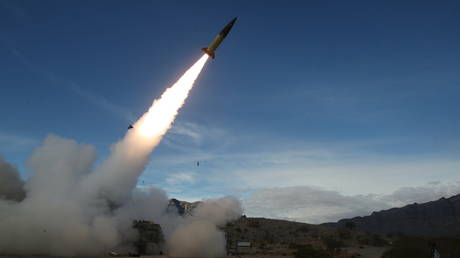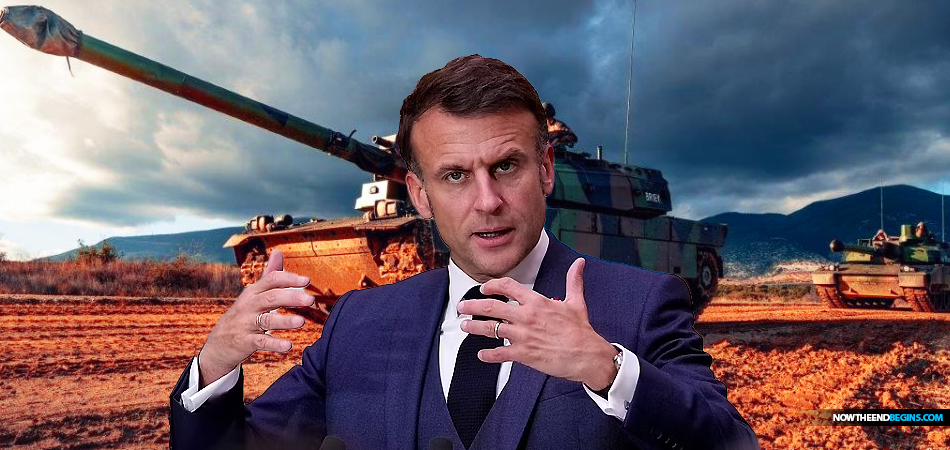Opinion: Energy Security, Russia, and National Strategy
from Disobedient Media:

The following was authored by Richard B. Levine, former Director of Policy Development on the NSC Staff under President Ronald Reagan; after six years at the White House, he became the first Deputy Assistant Secretary of the Navy for Technology Transfer and Security Assistance, serving under three Secretaries of the Navy. He is the recipient of two Presidential letters of commendation and the Department of the Navy’s highest civilian decoration, the Distinguished Civilian Service Award. Mr. Levine received his baccalaureate, with honors, from the Johns Hopkins University. He holds an MBA from Harvard.
Our country possesses 61 commercially operating nuclear power plants employing 99 reactors, substantially more than any other nation. America’s nuclear industry, however, has been in decline for decades. This is in contraposition to the rise of Russia and China as the principal builders of new nuclear plants. This situation has created a policy vacuum, for the United States has limited means to monitor or control the fuel cycles of plants built in other counties by adversarial nations. The world relies on the International Atomic Energy Agency (IAEA) to provide safeguards for nuclear power plants, but the environment for such policing has changed.
Four recent developments concerning nuclear power (and nuclear proliferation) are of such moment that our projections must be adjusted by our consideration of these matters. NATO’s intervention in Libya and the death of Muammar Gaddafi, the North Korean nuclear weapons program, the Iranian nuclear program as adjusted by the Joint Comprehensive Plan of Action, and Russia’s objectives in this domain, each form sides of a prism: actions involving nuclear power and nonproliferation that we contemplate or initiate must address the ensuing refractions.
Libya
As unrest spread from Tunisia to Libya in the wake of the Arab Spring, which began in 2010, NATO air supremacy and precision bombing provided the margin of force necessary to destroy Muammar Gaddafi’s regime. That Secretary of State Hillary Clinton declared in October 2011, “We came, we saw, he died,” is all the rationale that Kim Jong-un or Ali Khamenei, the supreme leaders of their respective countries, needed to prioritize their nuclear arms programs, for despite his being a tyrant, a murderer, and a terrorist, Muammar Gaddafi did relinquish his nuclear weapons program beginning in 2003 and provided, to the United States, the names of black-market dealers who facilitated his WMD (weapons of mass destruction) efforts.
Though both the North Korean and the Iranian nuclear weapons programs preceded Libya’s disarmament of its WMD materials, grave harm to America’s security was inculcated when Hillary Clinton reformulated Julius Caesar’s message to the Roman Senate. “I came, I saw, I conquered,” should never have been the model for a statement by the U.S. Secretary of State concerning the extrajudicial execution, which almost certainly involved torture, of a head of state who had previously foreswore, dismantled, and transferred to the United States the elements of his nuclear arms program. This brief statement has and will adulterate and limit the efficacy of America’s future actions in the related fields of nuclear power, nonproliferation, and contestation of foreign and illicit nuclear weapons programs by rogue and tyrannical states.
North Korea
The North Korean nuclear weapons program presents a grave threat to regional and American security. Perhaps still more dangerous is the status of North Korea as a template for other dictatorial states that seek to acquire WMDs. The recent summits have quieted the threat, but the threat has not been removed.
No matter the agreement North Korea makes with the United States, North Korea should be expected to endeavor covertly to provide, for a price, nuclear components, blueprints, or technology to other pariah nations, possibly in Asia, almost certainly in the Middle East, and plausibly, in time, in Sub-Saharan Africa. In this, North Korea only need replicate the Chinese model for proliferation, for it was China that provided substantial components for North Korea’s nuclear technology. In addition, Dr. Abdul Qadeer Khan, the architect of Pakistan’s nuclear weapons program, was the recipient of Chinese nuclear weapons parts and designs: designs that were in turn sold to North Korea, if they had not already been transferred directly by China.
Brinksmanship, now ongoing between the United States Government and North Korea, and the recently concluded summits, will serve as primers for future states that will leverage their strategic programs to serve their political aims. What works and what does not work in holding the United States and affiliated countries at risk or in constraint will be studied. Future North Koreas, perhaps on many different continents, may, indeed, be more dangerous adversaries, for they will be educated by the mechanics and the parlay resulting from the current crisis.
Iran
The Joint Comprehensive Plan of Action, better known as the Iran nuclear deal, was the flower of American weakness and aimlessness. By removing sanctions imposed by the United States and other nations and by transferring enormous sums of money directly to the Iranian regime in exchange for mild and largely unverifiable curbs on Iranian nuclear endeavors, the United States created a high watermark for the price it was willing to pay for the most tepid reductions in a nation’s nuclear-weapons capacity. A ludicrous aspect of the deal was its many sideshows, such as the transfer to Iran from America of $1.7 billion, ostensibly to recompense Iran, with interest, for its purchase, before its revolution, of $400 million in U.S. weapons, which were never delivered. What is tragicomical is that the United States paid $1.3 billion in interest to a Muslim state in which the charging of interest (usury) is illegal, for Article 595 of Iran’s Islamic Punishment Law deems usury a crime. Such payment constitutes the largest single sum provided directly by America to a state that explicitly supports terrorism.
Countervailing action by the United States is required to undo the damage wrought by the Joint Comprehensive Plan of Action; President Trump’s decision to nullify America’s acceptance of the deal and to reimpose economic sanctions positions the United States to thwart Iranian ambitions to amass a deliverable arsenal of nuclear weapons. The nature and scope of the strategic offset to Iran will be one of the defining international-security conundrums of the next decade. Thus, the matter must be addressed now.
Russia
There is evidence that the Uranium One scandal is part of a larger plan, whose intent is nothing less than the enablement of Russian usurpation and ascension in the Middle East and in Africa. This perilous course was facilitated, knowingly or unknowingly, by foreign and American actors of great position.
The Uranium One scandal, as it is presented in the media, is delineated by a subterfuge engineered to hide the real crime. According to the U.S. Energy Information Administration, “The United States imports most of the uranium it uses as fuel. Owners and operators of U.S. nuclear power reactors purchased the equivalent of 50.6 million pounds of uranium in 2016. About 11% of the uranium delivered to U.S. reactors in 2016 was produced in the United States and 89% came from other countries.” This means that Russia’s acquisition of Uranium One, which controls about 20% of U.S. uranium production, gives Russia control of just 2.2% of U.S. power-plant requirements. Further, Uranium One’s U.S. mines and facilities could be requisitioned by the United States, in time of national emergency, or nationalized, at any time, using as a precedent our nationalization of the American arm of the German drug giant, Merck, during World War I.
American uranium supply was never the primary prize. Uranium One had assets in Kazakhstan, Australia, Canada, South Africa, and the United States; in 2013, Rosatom (Russia’s state monopoly responsible for nuclear energy) completed its acquisition of Uranium One, after acquiring a controlling interest in 2010. The three dominant producers of uranium ore are Kazakhstan, which supplies 39.3% of the world’s needs; Canada, which supplies 22%; and Australia, which supplies 9.3% (America supplies just 2.1%).
Though Russia did acquire assets in Canada and in America when it bought Uranium One, it was Russia’s actions in Australia and in Kazakhstan that define key elements of Russia’s intentions. According to a report by Kaitlyn Schallhorn, “Douglas Campbell, the FBI informant, alleged that Moscow paid millions of dollars to a lobbying firm to help Bill Clinton’s charities in order to influence Hillary Clinton, who was then former President Barack Obama’s Secretary of State.” According to The Hill, Campbell submitted a written statement to three congressional committees and met with House and Senate staff. Campbell related that, “The emails and documents I intercepted during 2010 made clear that Rosatom’s purchase of Uranium One — for both its Kazakh and American assets — was part of Russia’s geopolitical strategy to gain leverage in global energy markets. . . . I obtained documentary proof that Tenex was helping Rosatom win CFIUS approval, including an October 6, 2010 email . . . asking me specifically to help overcome opposition to the Uranium One deal.” (CFIUS is the Committee on Foreign Investment in the United States; Tenex is a Rosatom subsidiary; according to Reuters, Campbell, a businessman and lobbyist, “was a confidential source for the FBI in a Maryland bribery and kickback investigation of the head of a U.S. unit of Rosatom.”)
On September 7, 2007, Russia signed a nuclear cooperation deal with Australia; this agreement was not ratified in 2008 by Australia, as expected; instead, it was placed under review by a new (Rudd) government. Indeed, the agreement had been opposed by noted Putin critic, Gary Kasparov, who said, “You can only be confident that the Kremlin will look out for itself, that they have zero obedience to the rule of law and that all sales are final.”
The agreement was ratified finally in 2010, but exports of uranium to Russia were stopped due to sanctions imposed by the Australian government in the wake of Russia’s annexation of Crimea. Of note is that the 2007 agreement was signed by Sergey Kiriyenko, the head of Rosatom, and Australian Foreign Minister Alexander Downer, the same Alexander Downer whose night of drinking in 2016 with Trump campaign advisor George Papadopoulos kicked off the Russian collusion inquiry by instigating the FBI’s counterintelligence investigation. Intriguingly, Alexander Downer was an early and ardent supporter of the Clinton Foundation, obligating tens of millions in Australian taxpayer money to the purported charity.
The uranium agreement, though portrayed as unremarkable by elements of the Australian Government, must be considered in light of the following precursors:
First, the Russian-Australian nuclear cooperation agreement came hard upon UrAsia Energy’s acquisition of extensive uranium rights in Kazakhstan. In 2005, former President Bill Clinton and Frank Giustra, a Clinton Foundation board member and major donor, arrived in Kazakhstan; Giustra had founded UrAsia Energy in 2004 to acquire and exploit uranium mining and production in Kazakhstan. UrAsia Energy obtained Kazakhstani uranium assets from Kazatomprom, the state concern of that country, following Giustra’s and Clinton’s meeting with President Nursultan Nazarbayev. UrAsia Energy was acquired by Uranium One in 2007; Uranium One, and its interests in other major uranium-producing countries, was effectively acquired by a subsidiary of Rosatom in 2010, substantially expanding Russia’s control of worldwide uranium production. In total, Giustra contributed in excess of $100 million to the Clinton Foundation, including the associated Clinton Giustra Enterprise Partnership (additional donations, from those affiliated with mining transactions, totaled millions more).
Clinton received one of his largest speaking fees, in 2010, from a Kremlin-affiliated Russian bank, Renaissance Capital, which supported Rosatom’s planned acquisition of Uranium One. This $500,000 speaking fee, for an appearance in Moscow, came after Rosatom’s acquisition of Uranium One was approved by CFIUS, and announced publically (The Department of State [then led by Hillary Clinton] is one of CFIUS’s nine members). Thus, Russia, through a long-term plan, acquired sought-after uranium deposits in Kazakhstan, along with those in other countries.
Read More @ DisobedientMedia.com



